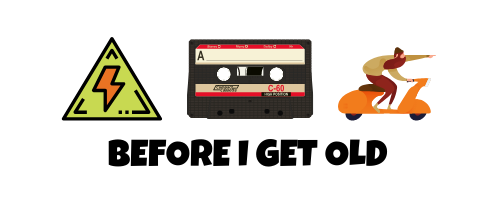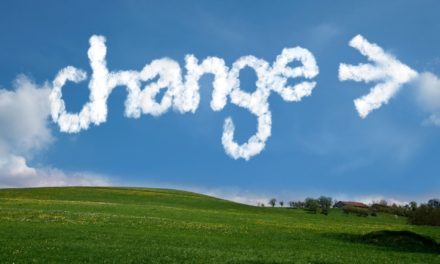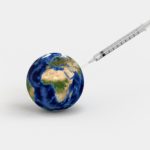Imagine that you and nine other people are in a small pub with the doors and windows shut. One of you has asymptomatic Covid-19 and is talking, but not coughing or sneezing. Now, imagine that instead of those virus particles being 100nm in diameter (that’s about one ten-thousandth of a milimetre) they were each the size of a grain of sand, were blue in colour and so talking with an infected person was being like sandblasted and paintballed at the same time. Imagine also that every non-infected person’s breath was yellow. As our infectious person talks, the blue particles mix with the yellow breath of the room’s other occupants, turning the air green. As people come in and out of the pub more of them are exposed to this green fog. How long would you stay in that pub? Let’s assume our infected drinker stays for a few hours. Two or three other customers breathe in enough of the virus that they become infected, the others are exposed to it, but not enough to get sick.
Current thinking suggests that as few as 1000 virus particles can cause an infection. A typical sneeze can contain 200 million virus particles. An infected person breathing normally releases 25 particles per minute, talking increases the release of virus particles tenfold and so ten minutes of talking face to face with an infected person could be enough to infect you (less in a noisy venue with closer contact and louder volumes).
Exposure time is also important. An infected person breathing in the same room would only need to be present for 50 minutes to expel enough of the virus to transmit the infection. Walking into that room after they’d left might also be enough to infect and because 40 per cent of transmission is by asymptomatic people, it’s a smart move to avoid close personal contact for more than 10 minutes.
It’s last orders and our newly-exposed pub-goers head home and have ten-minute conversations with their partners and children, infecting or exposing them. And those others, over the following days (all of this before they show symptoms) have more conversations with other people who in turn become infected too. Before you know it there’s a whol load of people out in the community with differing levels of exposure and possibly infection wandering around either sick, or not.
If you’d have been in that pub with watching that yellow air turn green my guess is you’d have been out of there like a shot. But because, like car exhaust fumes, we can’t see the virus, our brains are fooled that it isn’t there. We don’t see it and that’s the problem. And, of course it isn’t just pubs and restaurants, but aside from workplaces (which many of us are still not back to) those are the places where we are most likely to be exposed indoors for the longest. Which is why they are the current focus of government regulation
What’s equally interesting though are those people from the pub who were exposed to the virus, but not in the amounts to actually infect them. If Coronavirus replicates every eight hours like many other common viruses, then those 1000 particles would become 1 million in three days. That could easily be enough to overwhelm your immune system. But what if you only took in 100 virus particles? In the same three days they would become 100,000 and that’s a fight your immune system can win. What if these lesser-exposed people’s immune systems still detect the virus, but, because the amounts are small, they can deal with it and not get sick? Is this why they test positive, maybe have a few mild symptoms and develop immunity without getting ill?
Your body has two types of immune system; the ‘innate’ one is the system that clumsily fights infection using things like inflammation and fever until the other one, the ‘acquired’ immune system works out how to kill this particular bad guy and makes the specific antibodies which will also be remembered for later, should you encounter the virus again.
Logic would suggest that if you have a low exposure to the virus and a healthy immune system that your innate system can cope with the (relative) handful of particles while your acquired system gets on with it (it usually takes a couple of weeks for the acquired system to get things under control).
If this is true and dosage is a really key factor then the case for masks (to prevent those infected spreading it) becomes even stronger.
The other interesting idea surfing across the Beforeigetold grey matter this week concerned the matter of why this second wave we’re experiencing in October hasn’t been as deadly as the first one in any country so far. At first I wondered if it were due to the above – that we’ve all been exposed to small amounts of the virus over the year and are developing some kind of simple immunity. Which might be true, but what if something else were happening too.
Everything that relies on DNA (and its anorexic RNA twin – which is what most viruses are made of) mutates. It’s why some of us go bald and get certain diseases. Just supposing that the original version of Covid-19 was the super-strong, crazy-killer version, which in laying waste to so many that it infected also bought about its own extinction because people got too sick and died before they could transmit it.
If you were a virus that depended on human transmission to survive, the best thing to do would be irritate some nostrils for maximum transmission distance, but keep the host alive and functioning so they could spread your offspring to the maximum amount of other humans.
A mutation of Covid that infected but didn’t kill would soon come to dominate, while the super-strength version sweeps the board at the 2020 viral Oscars and then disappears without trace because there’s no one left to transmit it.
Could this, combined with a creeping human immunity be what’s changed between March and October? We’re still getting sick, but fewer of us (at the time of writing) are dying.
In the UK national newspapers last Thursday I counted eight different stories about Covid-19 transmission from different studies that pretty much all contradicted or conflicted with each other. On the surface that suggest that disparate groups of global researchers have different conclusions, but it could also be evidence that we are learning much about the virus that will help us beat it. All we have to do is look for the common factors that join-up the research.
The scientific community has massive challenges with Covid. In less than a year they have had to work out what the questions might be, plan studies, find suitable numbers of infected and non-infected people to measure parameters that may or may-not be important and then try and work out what the heck it all means. It’s no wonder the data is inconclusive.
Forgive me for rambling on (again), as someone with a fascination for biochemistry who hasn’t actually been actively involved for 25 years I am very aware that my qualifications here are tenuous. But as I also mentioned in another blog, every disaster movie has the weird dude that accidentally comes across the right idea that makes the aliens’ heads explode.
Did I mention I’m an optimist?










